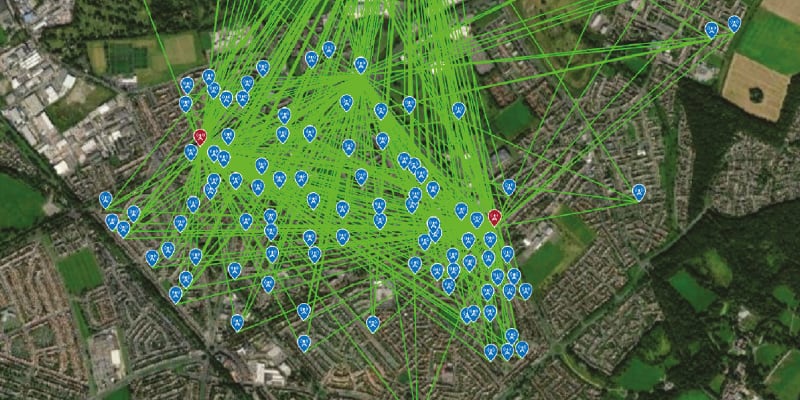Halfway through 2020, Cobalt Homes approached HomeLink with the objective of carrying out an ambitious multi-sensor IoT project across 100 properties.
Cobalt Housing’s technology and transformation manager, Chris Fray, said, “The internet of things should be a central part of every housing provider’s sustainability, environmental, and repair and maintenance (R&M) strategies. Annual R&M is an organisation’s biggest spend, while disrepair has the potential to have one of the greatest impacts – IoT can address both of these areas.”
Cobalt has been exploring new ways of working through innovative technologies and was recently successful in bidding for a knowledge transfer partnership (KTP) through Innovate UK around the concept of ‘healthy homes, healthy tenants and healthy communities’. Part of the work outlined in the KTP was the introduction of home-based sensor technologies to improve indoor environments.
Combining maintenance with good health
IoT has matured as a preventative maintenance technology in social housing but it’s also now emerging as an important tool in keeping residents safe and healthy. As a result, Cobalt approached HomeLink with three aims:
Identify additional opportunities to improve its residents’ health and safety;
Provide evidence of the health benefits and maintenance savings at scale via a 100-home initial deployment;
Examine the IoT ethics, behavioural psychology and acceptability by interviewing the 100 residents throughout the project.
Fray said, “We can clearly see the benefits of IoT for our assets by making them a living organism that we can monitor, maintain and modify more effectively. However, we are also keen to explore what IoT means for our residents, how they feel about the sensors, will IoT make them more empowered, and will they treat their properties any differently?”
The finer details
Cobalt knew that in order to understand its return on investment, tenant acceptability and operational feasibility at scale, an ambitious 100-home deployment would be needed. Cobalt was confident that IoT would work from a technical perspective but it was keen to see it working in its housing stock with its residents and with its operational processes.
To help address Cobalt’s objectives, the deployment is now being split into two parts:
- 90 homes with environmental (temperature, humidity & carbon dioxide) and electricity sensors;
- 10 ‘advanced’ homes with additional devices, including Aico’s connected smoke and carbon-monoxide alarms and window and door sensors.
Each tenant involved in the project will give consent from a GDPR perspective and need to download a mobile app in order to interact with their property’s data environment from a health, safety and maintenance perspective.
The IoT deployment is due to be completed by the end of April 2021. After this, data will be collected and analysed over the next 12 months before the results are published and a decision made about any further roll-out of the project. We will be sharing our findings with Housing Technology in due course.
What does the future hold?
Fray said, “The intention is to expand both the scope and volume of IoT sensors across more of our properties; 100 properties is a good start but we have 6,000 properties and so there is some way to go yet! However, if the RoI is satisfactory then we will have solid grounds for expanding the project’s scope.”
Chris Jones is the chief operating officer at HomeLink (Aico) and Chris Fray is the technology and transformation manager at Cobalt Housing.


